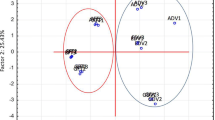Abstract
Medicinal plants like Aloe barbadensis, Ginkgo biloba, Panax ginseng, and Cassia angustifolia are being increasingly used but self-medication is a major public health challenge because of their numerous interactions. Furthermore, dietary exposure to metals through the consumption of these commercial preparations should be evaluated. Some of these metals may have a nutritional interest but others are metals of toxicological relevance. The content of essential and toxic metals has been analyzed by inductively coupled plasma optical emission spectrometry (ICP-OES) in 80 samples of both organically and conventionally grown aloe, senna, ginseng, and ginkgo pharmaceutical formats to establish their metallic profile, to evaluate their nutritional value and to assess the toxic metal risk resulting from their consumption. Ca (9181 mg/kg ww) in senna, Fe (30.0 mg/kg ww) in ginseng, and Al (15.7 mg/kg ww) in ginseng are noteworthy. The consumption of 9 g/day of ginkgo represents 6.44% of the RDI set for Ca. The consumption of 25 mL/day of aloe syrup is 3.06% (men) and 1.52% (women) of the RDI of Fe. Al exposure from 25 mL/day of aloe consumption is 2.71% of its TDI. Considering the dosages recommended by the manufacturers, the intake of toxic metals does not pose a health risk but the intake of essential metals is worth mentioning.
Similar content being viewed by others
References
Capasso F, Grandolini G, Izzo AA (2006) Fitoterapia – Impiego razionale delle droghe vegetali. Springer Sciences and Business Media, Milan
Asadbeigi M, Mohammadi T, Rafieian-Kopaei M, Saki K, Bahmani M, Delfan M (2014) Traditional effects of medicinal plants in the treatment of respiratory diseases and disorders: an ethnobotanical study in the Urmia. Asian Pac J Trop Med 7(S1):S364–S368
Rubio C, Paz S, Ojeda I, Gutiérrez AJ, González-Weller D, Hardisson A, Revert C (2017) Dietary intake of metals from fresh cage-reared hens’ eggs in Tenerife, Canary Islands. J Food Qual 2017:1–11. https://doi.org/10.1155/2017/5972153
FESNAD (Federación española de Sociedades de Nutrición, Alimentación y Dietética) (2010) Reference dietary intakes for the Spanish population. Act Diet 14(4):196–197
IOM (Institute of Medicine) (2001) Panel on Micronutrients and the Standing Committee on the Scientific Evaluation of Dietary Reference Intakes. Food and Nutrition Board of the Institute of Medicine of the National Academies. Dietary reference intakes for vitamin A, vitamin K, arsenic, boron, chromium, copper, iodine, iron, manganese, molybdenum, nickel, silicon, vanadium, and zinc. National Academy Press, Washington (DC)
SCHER (Scientific Committee on Health and Environmental Risk) (2012) Assessment of the tolerable daily intake of barium. Eur Commission. https://doi.org/10.2772/49651
EFSA (2015) Scientific opinion on the risks to public health related to the presence of nickel in food and drinking water. EFSA J 13(2):4002–4204
WHO (World Health Organization) (2010) Strontium and strontium compound. Concise Int Chem Assess Doc 77:1–63
AESAN (2012) Informe del Comité Científico de la AESAN en relación a criterios de estimación de concentraciones para la discusión de propuestas de límites de migración de determinados metales pesados y otros elementos de objetos de cerámica destinados a entrar en cont. Rev Com Cien 16:11–20
EFSA (2011a) Statement on the evaluation on a new study related to the bioavailability of aluminum in food. EFSA J 9(5):2157
EFSA (2011b) Panel on Contaminants in the Food Chain (CONTAM). Statement on tolerable weekly intake for cadmium. EFSA J 9(2):1975
González-Weller D, Rubio C, Gutiérrez AJ, Luis González G, Caballero Mesa JM, Revert Gironés C, Burgos Ojeda A, Hardisson A (2013) Dietary intake of barium, bismuth, chromium, lithium, and strontium in a Spanish population (Canary Islands). Food Chem Toxicol 62:856–868
IUPAC (International Union of Pure and Applied Chemistry) (1995) Nomenclature in evaluation of analytical methods including detection and quantification capabilities. Pure Appl Chem 67:1699–1723
AESAN (2006) Spanish diet model for the determination of consumer exposure to chemical substances. Ministerio de Sanidad y Consumo, Madrid
European Pharmacopoeia (2008) Herbal drugs, monograph 0765. Pharmaeuropa 20(2):291–293
European Pharmacopoeia (2008) Herbal drugs, monograph 1433. Pharmaeuropa 20(2):302–303
Rubio C, Lucas JR, Gutiérrez AJ, Glez-Weller D, Pérez Marrero B, Caballero JM, Revert C, Hardisson A (2012) Evaluation of metal concentrations in mentha herbal teas (Mentha piperita, Mentha pulegium and Mentha species) by inductively coupled plasma spectrometry. J Pharm Biomed Anal 71:11–17
Bragança V, Melnikov P, Zanoni L (2011) Trace elements in different brands of yerba mate tea. Biol Trace Elem Res 144(1):1197–1204
Schunk PF, Kalil IC, Pimentel-Schmitt EF, Lenz D, de Andrade TU, Ribeiro JS, Endringer DC (2016) ICP-OES and micronucleus test to evaluate heavy metal contamination in commercially available Brazilian herbal teas. Biol Trace Elem Res 172(1):258–265
Tóth G, Hermann T, Da Silva MR, Montanarella L (2016) Heavy metals in agricultural soils of the European Union with implications for food safety. Environ Int 88:299–309
Author information
Authors and Affiliations
Corresponding author
Ethics declarations
Conflict of Interest
The authors declare that they have no conflict of interests.
Rights and permissions
About this article
Cite this article
Rubio, C., Paz, S., Tius, E. et al. Metal Contents in the Most Widely Consumed Commercial Preparations of Four Different Medicinal Plants (Aloe, Senna, Ginseng, and Ginkgo) from Europe. Biol Trace Elem Res 186, 562–567 (2018). https://doi.org/10.1007/s12011-018-1329-7
Received:
Accepted:
Published:
Issue Date:
DOI: https://doi.org/10.1007/s12011-018-1329-7



